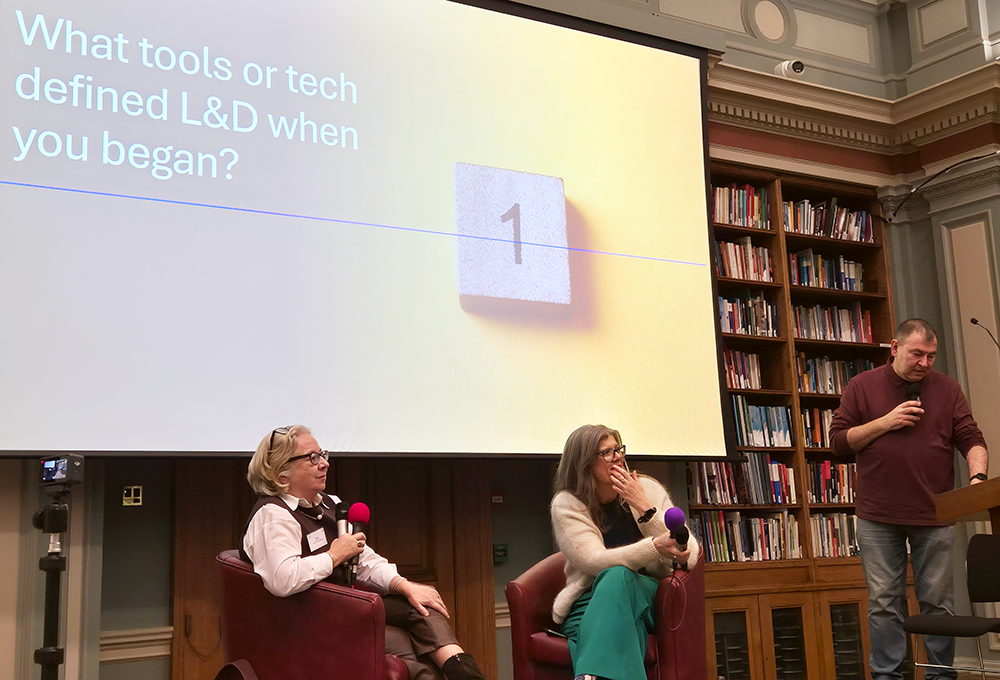Nina Mehta explains why learning opportunities and employee development are top drivers of employee satisfaction.
Informal learning is becoming more effective, incorporating resources such as TED talks and YouTube tuition. Photo credit: Fotolia
One of the challenges facing organisations today is creating a culture of learning that encourages employees to increase their knowledge, develop their skills and enhance their performance on a continuous basis, not just once or twice a year. Yet, organisational L&D programmes are falling short when it comes to creating a learning culture that reflects how people learn in today’s workplace.
More Features
It is becoming more apparent that HR and L&D professionals need to approach learning in new and different ways. There is no place now for forcing employees into an outdated model of what learning should look like – such as sitting in a classroom for days on end.
The 70:20:10 model of learning, where only 10 per cent of learning comes through formal training sessions, 20 per cent from informal learning and the majority, 70 per cent on the job, is widely accepted by training professionals.
These days the boundaries between the three types of learning are blurring. Informal learning is becoming more effective, incorporating resources such as TED talks and YouTube tuition. Formal learning is increasingly accessible on-the-job rather than as a discrete two-day classroom course, for example.
And the definition of the success of training is evolving from simplistic pass-fail assessment to more sophisticated measures of increased productivity, performance and engagement.
The era of micro-learning
Learning takes place in ever-shorter time spans and employees are as likely to learn from peers and managers as they are from formal e-learning delivery. Most employees only have 1 per cent of the working week available for traditional learning and development and most learners will not watch a learning video that is more than four minutes long. This does not mean that learning and development are not taking place.
In this era of ‘micro-learning’, employees are looking beyond formal training resources to acquire the skills for the information they need to do their job – 70 per cent simply turn to search engines and 80 per cent get what they need from on-the-job interactions with peers and managers.
For skills development to have an impact, they need to be built into the fabric of an organisation, effectively creating a culture of learning. Here are five steps to establish a modern culture of forward-focused growth and development:
1. Conduct regular and ongoing performance discussions that include reviewing and planning learning and development. Underpin conversations with employees about their performance with the objective supporting and encouraging a learning culture. Align learning activity with business results and make it a transparent and intrinsic part of individuals’ career advancement.
2. Leverage your line managers. When it comes to staff development, direct managers have the largest role to play in providing employees with an opportunity to apply and grow their skills and abilities. Yet, 64 per cent of L&D leaders identified the fact that ‘managers don’t encourage, enable or follow up’ as an obstacle for learning. Executives should be primed to take every opportunity to underline the fact that learning and development is valued within the organisation. Managers must facilitate employee development by enabling employees to put into practice what they learn through stretch assignments, team collaboration, and offering regular coaching and feedback on their performance.
3. Use external learning resources. Training professionals and line managers cannot ignore the fact that employees are accessing external digital learning resources to acquire new skills or to gain knowledge to help them in their role. Organisations can use this approach as a springboard to identify the best resources and point employees to them. L&D departments that develop digital literacy when it comes to web resources will be better placed to meet the expectations of the next generation.
4. Put regular and effective communication at the heart of your talent strategy. Make sure employees are in no doubt about the value the organisation places on learning and that they will be rewarded for their participation. Communication about learning and development should be frequent and part of how your organisation promotes its talent strategy, ranging from short emails, blogs on company intranet sites, and through to presentations during all-hands company meetings.
5. Ensure all employees are included in the learning culture. Make sure employees at every level and in every location, have learning opportunities. This may mean providing mobile resources for remote workers or resources in different languages for employees in different countries.
As people increasingly access information and learning outside of work in small snippets as they need it, there is an opportunity for learning and development professionals to tap into this and make it part of an ongoing performance strategy in the workplace.
The key is to transform learning and development as we know it into an ongoing process supported by a culture of growth and development that includes formal learning, coaching and peer mentoring.
In addition, building a culture of learning within a clear context of ongoing performance management will engage employees and drive performance that translates into improved bottom-line results.
About the author
Nina Mehta is a Talent Management Consultant for Halogen Software.



